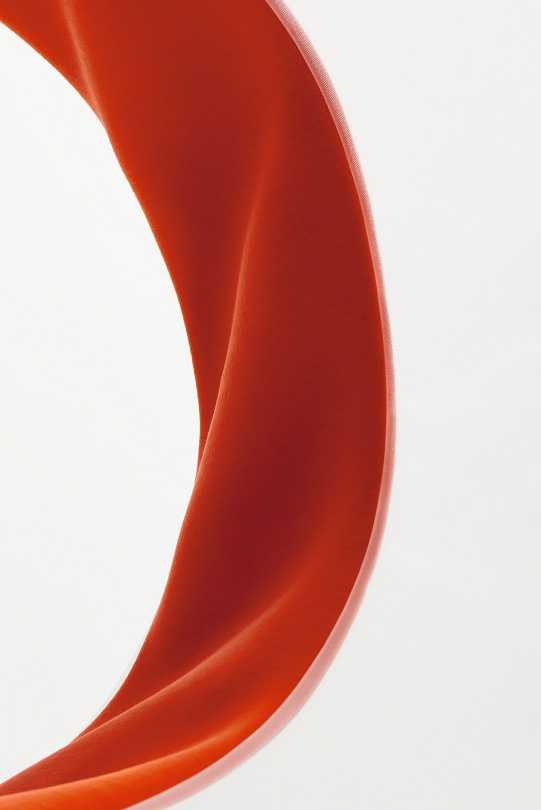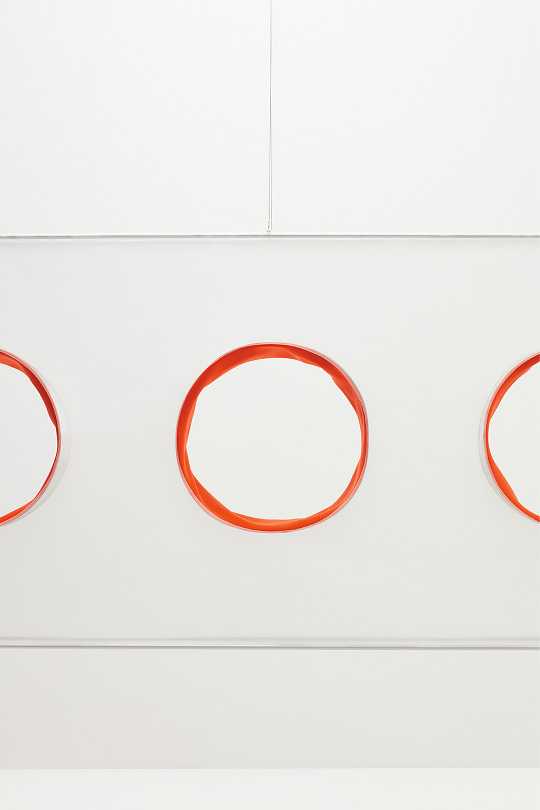Internal Windows
Akane Moriyama
Internal Windows
Architect and artist Akane Moriyama has built her practice on exploring how textiles can disrupt and reveal the hidden qualities of a space.
Internal Windows plays with the typology of the window: a frame that stands as the threshold between interior and exterior, and whose material qualities enable phenomena such as the refraction of light, distorted shadows and fogged glass. Utilising knitted textiles by Kvadrat Febrik, Internal Windows examines the potential of textiles to similarly frame our perspective of a space.
Within the installation, sheets of coloured Gentle 2 textile are rolled and placed within a semi-transparent volume that divides the space. As white light passes through the textile, the rolled tubes act as filters, tinting the other side of the space with colour washes. In Internal Windows, textiles become the medium through which a space is observed and defined.
Given her experience with textiles, Moriyama treated the Kvadrat Febrik knitted textiles as organic entities, stretching and shrinking the material as she worked with it. Ultimately, she settled upon rolling the textiles into soft curves that reveal their flexibility, as well as the different expressions of the textiles’ surface structures.
Drag to explore more
I was curious how the knitted fabrics would react to a space, the textile gives a direction.
- Akane Moriyama
Akane Moriyama
Akane Moriyama is a Stockholm-based artist and architect who uses techniques such as dyeing, knitting and weaving to intervene in architectural space. Her oeuvre comprises projects of varied scale, with notable examples including Curtain for O House (Kyoto, 2009), Cubic Prism (Texas, 2013), Curtain for Hirakata T-SITE (Osaka, 2016) and Azorean Spectrum Range (The Azores, 2017). She was a finalist for the Young Architects Program 2019 at MOMA PS1.



